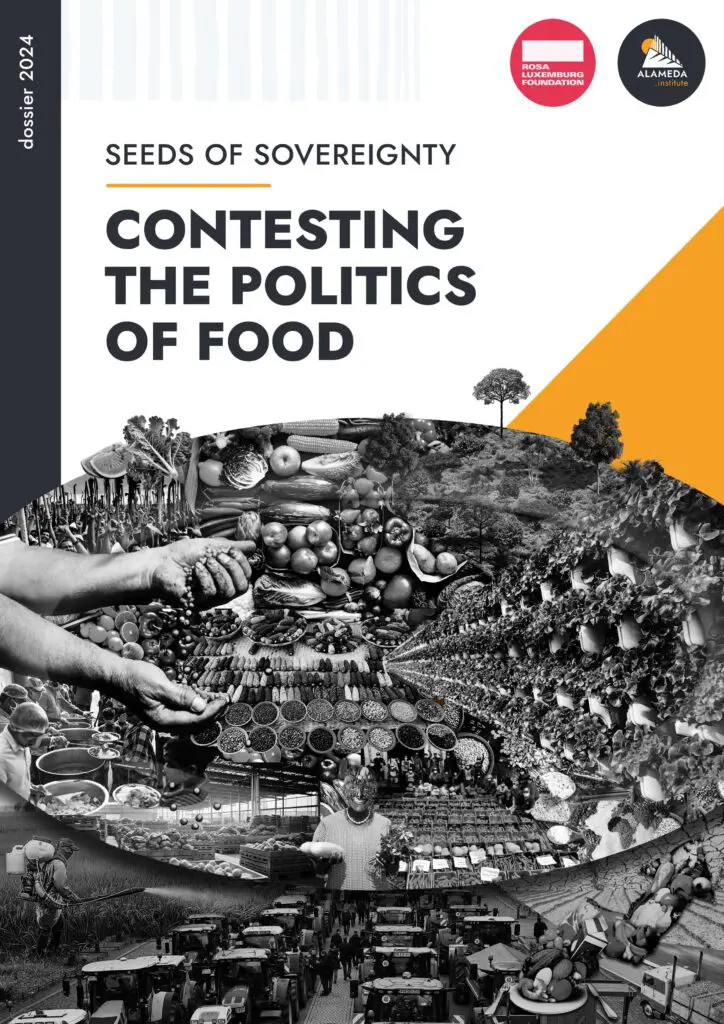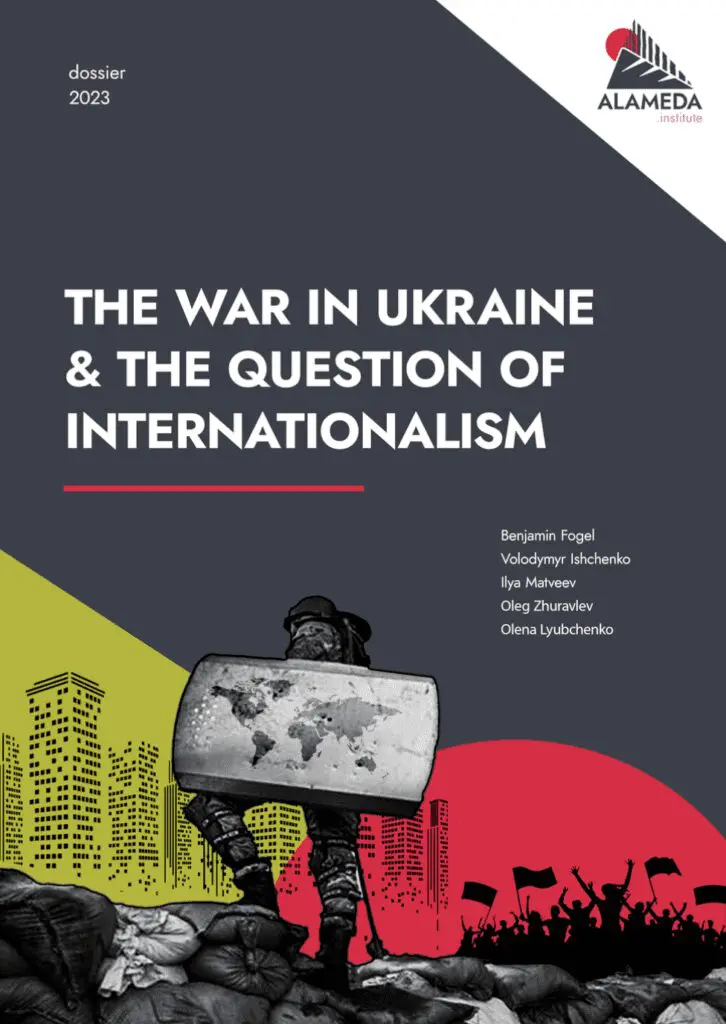Abordagens não alinhadas ao humanitarismo? Intervenções da Iugoslávia no movimento internacional da Cruz Vermelha na década de 1970
Laboratório pós-Segunda Guerra Mundial
As décadas que se seguiram à Segunda Guerra Mundial serviram como um ‘grande laboratório para o humanitarismo’, segundo a historiadora Silvia Salvatici. Durante esse período, a arquitetura da arena humanitária internacional foi reconstruída em meio a uma incerteza considerável. Nos países recém-independentes da África, Ásia e América Latina, que viriam a formar o Movimento dos Não-Alinhados, bem como nos países socialistas do Leste Europeu, indivíduos e grupos dentro e fora do governo desempenharam um papel ativo nesse processo, embora suas contribuições tenham sido minimizadas. Esses esforços foram muitas vezes descartados por serem excessivamente ideológicos e, portanto, menos relevantes para um conceito de humanitarismo convencionalmente entendido como uma arena de prática, conhecimento e influência dominada pelos países ocidentais. Entretanto, nossa pesquisa mostra que a compreensão contemporânea do humanitarismo e da política foi moldada pelas propostas e interações ideologicamente diversas daquela época.
As contribuições feitas por agentes humanitários na Iugoslávia socialista são um exemplo que pode complicar o quadro de como a política da Guerra Fria moldou a evolução do trabalho de assistência. Por exemplo, em 1950, representantes do governo iugoslavo propuseram uma cláusula no Estatuto do Alto Comissariado das Nações Unidas para Refugiados (ACNUR) estipulando que ‘o trabalho do Alto Comissariado será humanitário e social’ (a cláusula acabou sendo incorporada como Parágrafo 2 do estatuto). A proposta iugoslava foi motivada pela preocupação de muitos estados socialistas do Leste Europeu com relação ao status e ao tratamento de indivíduos que fugiram do Leste para o Oeste como refugiados políticos. A insistência de que o trabalho do ACNUR deveria ser apolítico e humanitário visava impedir que o Ocidente explorasse a organização para obter ganhos políticos, embora deva ser observado aqui que a Iugoslávia socialista não fazia parte do bloco soviético, mas era uma das fundadoras do Movimento dos Não Alinhados.
A queda dos impérios coloniais, a descolonização e o surgimento do movimento do Terceiro Mundo complicaram a estrutura binária da Guerra Fria em relação às discussões internacionais sobre soberania nacional e questões humanitárias. Criado em 1961, em Belgrado (então capital da Iugoslávia), o Movimento Não Alinhado foi um esforço de um grupo de países para se posicionar independentemente dos dois principais blocos de poder, a Organização do Tratado do Atlântico Norte e o Pacto de Varsóvia. O Movimento dos Não Alinhados era uma aliança frouxa e uma estrutura para a política externa, e não uma facção ideológica unificada. Ele permitiu que seus membros exercessem influência internacional e experimentassem modelos políticos e econômicos tanto do Oriente quanto do Ocidente. Os países membros do Movimento dos Não Alinhados desafiaram coletivamente as narrativas humanitárias ocidentais ao exigir participação igualitária nos espaços internacionais de convocação humanitária.
Esse desafio foi articulado com mais força na década de 1970 pela Cruz Vermelha Iugoslava, que liderou uma série de iniciativas para incentivar o movimento internacional da Cruz Vermelha e do Crescente Vermelho a reconsiderar seus princípios humanitários. Criticando a diplomacia silenciosa do Comitê Internacional da Cruz Vermelha (CICV), os iugoslavos argumentaram que falar contra a tirania e o racismo era um dever humanitário e procuraram persuadir outros agentes humanitários a adotar uma distinção entre neutralidade e comportamento não político. Ao fazer isso, eles ocuparam uma posição ambivalente, entre o leste comunista europeu e o terceiro mundo/sul global.
A Cruz Vermelha Iugoslava estava ciente de sua relativa insignificância dentro do movimento global da Cruz Vermelha, mas, mesmo assim, empenhou-se em promover reformas no movimento como um todo. Seus esforços incluíram o início de discussões sobre o racismo no movimento internacional da Cruz Vermelha; a realização da Primeira Conferência da Cruz Vermelha sobre a Paz em Belgrado, em 1975; e a publicação e distribuição de materiais promovendo uma visão alternativa do humanitarismo. Também estabeleceu um centro para treinar funcionários da Cruz Vermelha/Crescente Vermelho de países não alinhados e movimentos de libertação, forneceu ajuda humanitária a esses países e movimentos e iniciou novas redes de Sociedades da Cruz Vermelha/Crescente Vermelho nos Bálcãs e no Mediterrâneo. Este ensaio explorará mais de perto algumas dessas atividades.
(Anti-)racismo no movimento da Cruz Vermelha na década de 1970
As Nações Unidas proclamaram 1971 como o Ano Internacional de Ação de Combate ao Racismo e à Discriminação Racial. Em resposta, a Cruz Vermelha da Iugoslávia propôs colocar a questão da eliminação do racismo, tanto dentro quanto fora da organização, na agenda da 31ª Conferência Internacional da Cruz Vermelha da Iugoslávia.st sessão do Conselho de Governadores da Liga das Sociedades da Cruz Vermelha (doravante denominada ‘a Liga’), realizada no México em outubro daquele ano. Durante essa sessão, o Conselho de Governadores estabeleceu um grupo de trabalho para tratar da discriminação racial, nomeando para ele a Cruz Vermelha Iugoslava juntamente com as Sociedades de várias outras nações.
Para dar um exemplo da abordagem da Liga em relação ao racismo dentro das Sociedades nacionais, o grupo de trabalho naturalmente tinha preocupações com a Cruz Vermelha da África do Sul durante o apartheid. Após a sessão de outubro do Conselho de Governadores, o presidente da Liga enviou o Secretário Geral, Henrik Beer, em uma missão à Sociedade da Cruz Vermelha da África do Sul em fevereiro de 1972. Em seu relatório, Beer afirma sucintamente que a política de segregação racial do governo sul-africano levou à discriminação racial. Essa discriminação não permaneceu oculta; ela ocorreu de forma pública e oficial, com base nas leis do apartheid. Ela também afetou o trabalho da Cruz Vermelha Sul-Africana, que era descentralizado e realizado em seções e grupos segregados por ‘raça’. Beer concluiu que não havia discriminação racial ao ajudar as vítimas, mas havia ‘não apenas discriminação racial, mas também um sistema antidemocrático’ na forma como a Sociedade Nacional da Cruz Vermelha estava organizada. Ele recomendou que a Assembleia Geral da Cruz Vermelha Sul-Africana fosse realizada no hotel do aeroporto em Joanesburgo, onde a segregação nem sempre era rigorosa. Beer também propôs um sistema de membros do conselho, inclusive das seções provinciais indígenas, que poderiam participar da Assembleia Geral como consultores.
O Plano de Ação do grupo de trabalho propôs medidas para o Comitê Internacional da Cruz Vermelha, a Liga e as sociedades nacionais, concentrando-se nos países que tinham legislaturas racistas, bem como na população global de trabalhadores migrantes não brancos que buscavam uma vida melhor. Entre outras coisas, o plano pedia a todas as partes que alterassem seus respectivos estatutos, concentrando-se nos jovens e colaborando com outras sociedades nacionais e com seus respectivos governos. A implementação, no entanto, foi arrastada. Apenas algumas Sociedades nacionais responderam depois que a minuta do plano foi enviada para feedback em outubro de 1973. A Liga deveria estabelecer um órgão especializado permanente para analisar os relatórios das Sociedades nacionais sobre a luta contra a discriminação racial, mas isso não aconteceu devido a restrições financeiras e orçamentárias. Em 1974, um grupo de trabalho conjunto da Liga e do CICV foi formado para estudar as ações concretas que haviam sido tomadas de acordo com o Plano de Ação do grupo de trabalho original. Ele enviou três cartas às Sociedades nacionais: uma carta conjunta explicando os próximos passos, uma carta da Liga e uma carta do CICV dirigida diretamente às Sociedades nacionais. Até o final de julho de 1975, apenas nove das cerca de 120 sociedades nacionais haviam respondido à carta conjunta, doze à carta da Liga e duas à carta do CICV. A falta de interesse demonstrada pelas Sociedades nacionais foi um dos motivos pelos quais o Plano de Ação foi paralisado em 1975.
O apelo para reconhecer a discriminação racial como uma questão humanitária foi levado de volta ao Conselho de Governadores da Liga em 1977, embora sem nenhuma informação nova para ajudar a impulsionar o progresso. Várias tentativas foram feitas para reativar o Plano de Ação durante a década de 1980, incluindo um grupo ad-hoc nomeado em 1989 para supervisionar as ações, responder às perguntas das Sociedades nacionais e apresentar um relatório à Comissão. Embora a discussão sobre racismo dentro do movimento da Cruz Vermelha tenha se desenvolvido de forma desigual e lenta, o papel da Cruz Vermelha Iugoslava não foi totalmente esquecido. Em 2011, o CICV concedeu a Medalha Henry Dunant ao Dr. Boško Jakovljević, diretor de relações internacionais da Cruz Vermelha Iugoslava e, mais tarde, membro proeminente da Cruz Vermelha da Sérvia. Seu envolvimento ativo com o programa da Cruz Vermelha e do Crescente Vermelho contra o racismo e a discriminação racial foi mencionado entre suas muitas contribuições notáveis.
Primeira Conferência de Paz da Cruz Vermelha
Outra iniciativa internacional da Cruz Vermelha Iugoslava durante a década de 1970 foi a Primeira Conferência de Paz da Cruz Vermelha em 1972. A conferência foi realizada em Belgrado de 11 a 13 de junho de 1975. Participaram mais de 200 delegados de 80 sociedades nacionais.
Foi relativamente difícil para os participantes da conferência chegarem a um acordo sobre um entendimento compartilhado da paz, e o Instituto Henry Dunant foi convidado a ajudar a elaborar uma definição do conceito. Como resultado, foram definidas duas abordagens para a paz: primeiro, o estado de paz foi definido como a ausência de comportamento bélico em um momento e local específicos; e, segundo, a paz foi entendida como um equilíbrio em harmonia entre os indivíduos com base na dinâmica social predominante. Um dos resultados da conferência foi o afastamento da definição negativa anterior em direção a uma compreensão positiva do conceito, conforme visto no relatório da Liga das Sociedades da Cruz Vermelha de 1978:
A Cruz Vermelha não vê a paz simplesmente como a ausência de guerra, mas sim como um processo dinâmico de cooperação entre todos os estados e povos, cooperação essa fundada na liberdade, independência, soberania nacional, igualdade, respeito aos direitos humanos, bem como uma distribuição justa e equitativa de recursos para atender às necessidades dos povos. (p. 23)
Uma segunda conquista da conferência foi a criação do Programa de Ação da Cruz Vermelha como um Fator de Paz, desenvolvido para aumentar o compromisso com a paz dentro do movimento. Esse plano foi revisado na Segunda Conferência Mundial da Cruz Vermelha sobre a Paz, realizada na Finlândia em 1984. Os delegados relataram como haviam implementado individualmente o Programa de Ação e compartilharam ideias e experiências. Além da ajuda e do apoio mútuos, os elementos fundamentais da discussão incluíram os direitos humanos e a disseminação das Convenções de Genebra.
Repercussões das atividades iugoslavas para outros membros não alinhados e o símbolo do movimento
A Conferência de Paz de Belgrado não apenas discutiu a missão humanitária do movimento internacional da Cruz Vermelha, mas também o uso da cruz vermelha com fundo branco como emblema - especificamente, suas conotações religiosas. Essa era uma discussão antiga dentro do movimento. Estados membros muçulmanos, como os representados pela Sociedade do Crescente Carmesim (a Sociedade nacional otomana e depois turca), alegavam que as conotações cristãs do símbolo da cruz excluíam outras religiões. Um crescente vermelho e um leão vermelho com um sol também foram reconhecidos como emblemas oficiais do movimento em 1929, e várias propostas de novos símbolos foram feitas repetidamente, muitas vezes com o objetivo de refletir o caráter neutro e não religioso da postura protetora da organização humanitária. O debate sobre o emblema atingiu o auge em discussões extensas na década de 1970, quando o movimento foi confrontado com críticas de várias sociedades nacionais que enfatizavam a discriminação interna e a desigualdade entre os países membros. Com base em sua identidade nacional como membro ativo do Movimento Não Alinhado, a Cruz Vermelha Iugoslava postulou repensar o conceito de neutralidade que o emblema da Cruz Vermelha internacional deveria representar.
A crítica iugoslava referente às discrepâncias internas do movimento encontrou aprovação entre outras nações membros. Em 1975, a Sociedade da Cruz Vermelha Etíope propôs abandonar os vários emblemas equivalentes e adotar o símbolo de um coração vermelho (chamado de ‘coração humilde’) para refletir os fatos e as necessidades básicas da vida humana e unir todas as nações membros sob uma bandeira universal.1Muito obrigado à Asta International da Universidade Johannes Gutenberg e à Kultur- und Sprachmittler e.V. por ajudar a traduzir o documento histórico relevante do amárico para o alemão.
No entanto, a maioria dos participantes da Conferência de Belgrado não concordou com a solicitação dos etíopes, afirmando que seria muito precário mudar o emblema bem estabelecido.
No fim das contas, o status quo venceu. O movimento internacional da Cruz Vermelha estabeleceu um grupo de trabalho sobre o emblema, distribuindo um questionário em 1979 para encontrar uma solução. Nesse caso, entretanto, as sociedades do bloco soviético e do Ocidente geopolítico tenderam a concordar que a cruz era um emblema muito bem estabelecido para ser abandonado. Várias sociedades nacionais não alinhadas que participaram do questionário também favoreceram o status quo em relação às outras opções oferecidas. Por fim, elas declararam preferência por um único emblema, seja o símbolo da cruz ou um totalmente novo, embora essa última opção tenha sido rejeitada pelo grupo de trabalho por não ser realista.
Conclusão
A visão humanitária por trás das iniciativas da Cruz Vermelha da Iugoslávia na década de 1970 diferia significativamente das abordagens humanitárias dominantes da época. Ao contrário do projeto moral liberal das Sociedades dos países ocidentais, que buscavam salvar o ‘Terceiro Mundo’ por meio da perícia e da ciência, a Cruz Vermelha da Iugoslávia e seus parceiros não alinhados percebiam a libertação anticolonial como uma meta humanitária. O argumento deles era que a Cruz Vermelha internacional não precisava necessariamente apoiar a libertação das ex-colônias, mas que não poderia estar realmente servindo à humanidade sem fazer isso. Nessa visão, o papel de uma organização humanitária se estende à promoção da transformação social global e ao trabalho em prol de um mundo mais justo e humano para todos.
Os apelos feitos pelos humanitários iugoslavos na década de 1970 para repensar algumas das premissas fundamentais do trabalho humanitário devem ser examinados criticamente. Estudiosos como Paul Stubbs demonstraram a posição ambivalente e o privilégio racializado da Iugoslávia socialista e não-alinhada, que ‘em alguns momentos falava em nome dos ‘países em desenvolvimento’; em outros, se afastava e se diferenciava desses países; e até mesmo, em algumas ocasiões, se apresentava como um país em desenvolvimento’. No entanto, uma coisa é certa: nem a glorificação nostálgica nem a desconsideração irônica dos atores socialistas e não alinhados e suas iniciativas nos ajudarão a entender as conversas por meio das quais o setor humanitário surgiu na forma que conhecemos hoje. As discussões dentro do movimento internacional da Cruz Vermelha durante a década de 1970, sobre os significados do trabalho de paz e as formas adequadas de ser apolítico e humanitário, contêm várias histórias e apontam para imaginações alternativas de humanitarismo que merecem uma análise crítica mais aprofundada.
Recomendações da literatura
Brković, Čarna. 2024. “Socialist Modernist Worldmaking: Yugoslav Interventions in the International Humanitarian Debates in the 1970s”.” Humanity: An International Journal of Human Rights, Humanitarianism, and Development (Revista Internacional de Direitos Humanos, Humanitarismo e Desenvolvimento) 15, no. 1 (2024): 18–40, https://doi.org10.1353/hum.2024.a941434.
Brković, Čarna. Realigning Humanitarianism in the Balkans. From Cold War Politics to Neoliberal Ethics [Da política da Guerra Fria à ética neoliberal]. Indiana University Press, 2025.
Cretu, Doina Anca. Ajuda externa e construção do Estado na Romênia entre guerras. Stanford University Press, 2024.
Iacob, Bogdan C. “Paradoxes of Socialist Solidarity: Romanian and Czechoslovak Medical Teams in North Korea and Vietnam (1951-1962)”.” Mundo(s) 20, no. 2 (2021): 117–140, https://doi.org/10.3917/mond1.212.0117
Kirasirova, Masha. The Eastern International: Árabes, asiáticos centrais e judeus no Império Anticolonial da União Soviética. Oxford University Press, 2024.
Kyoichi, Sugino. “A cláusula ‘não política e humanitária’ do Estatuto do ACNUR”.” Pesquisa Trimestral sobre Refugiados 17, no. 1 (1998): 33–59, https://doi.org/10.1093/rsq/17.1.33
Report of the League of Red Cross Societies on the World Red Cross Conference on Peace (Belgrado, 11-13 de junho) e Programme of Action on the Red Cross as a factor of peace (edição final), ICRC Archive, Genebra, 1978.
Salvatici, Silvia. A History of Humanitarianism, 1755-1989: In the Name of Others (Uma História do Humanitarismo, 1755-1989: Em Nome dos Outros). Manchester University Press, 2019.
Stubbs, Paul. “Socialist Yugoslavia and the Antinomies of the Non-Aligned Movement” [Iugoslávia socialista e as antinomias do movimento não alinhado].” LeftEast, 17 de junho de 2019. https://www.criticatac.ro/lefteast/yugoslavia-antinomies-non-aligned-movement/
Van Dijk, Boyd. Preparando-se para a guerra: a criação das Convenções de Genebra. Oxford University Press, 2022.
NOTAS DE RODAPÉ
- 1Muito obrigado à Asta International da Universidade Johannes Gutenberg e à Kultur- und Sprachmittler e.V. por ajudar a traduzir o documento histórico relevante do amárico para o alemão.

ARTIGOS RELACIONADOS
XI / Soberania e a policrise
IX / Humanitarismo após a unipolaridade
VII / Teses sobre a situação na Ucrânia
IV / Guerra contrária (revolucionária) contra a sociedade
II / O conflito de classes por trás da guerra da Rússia




